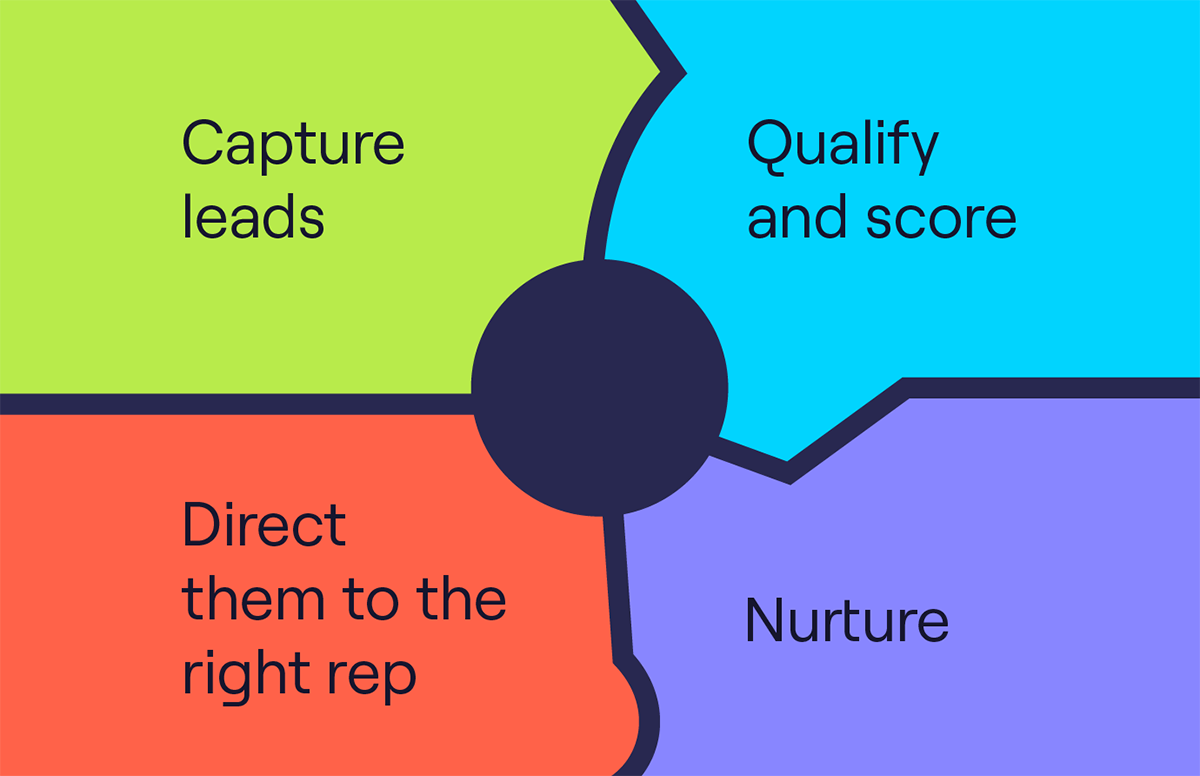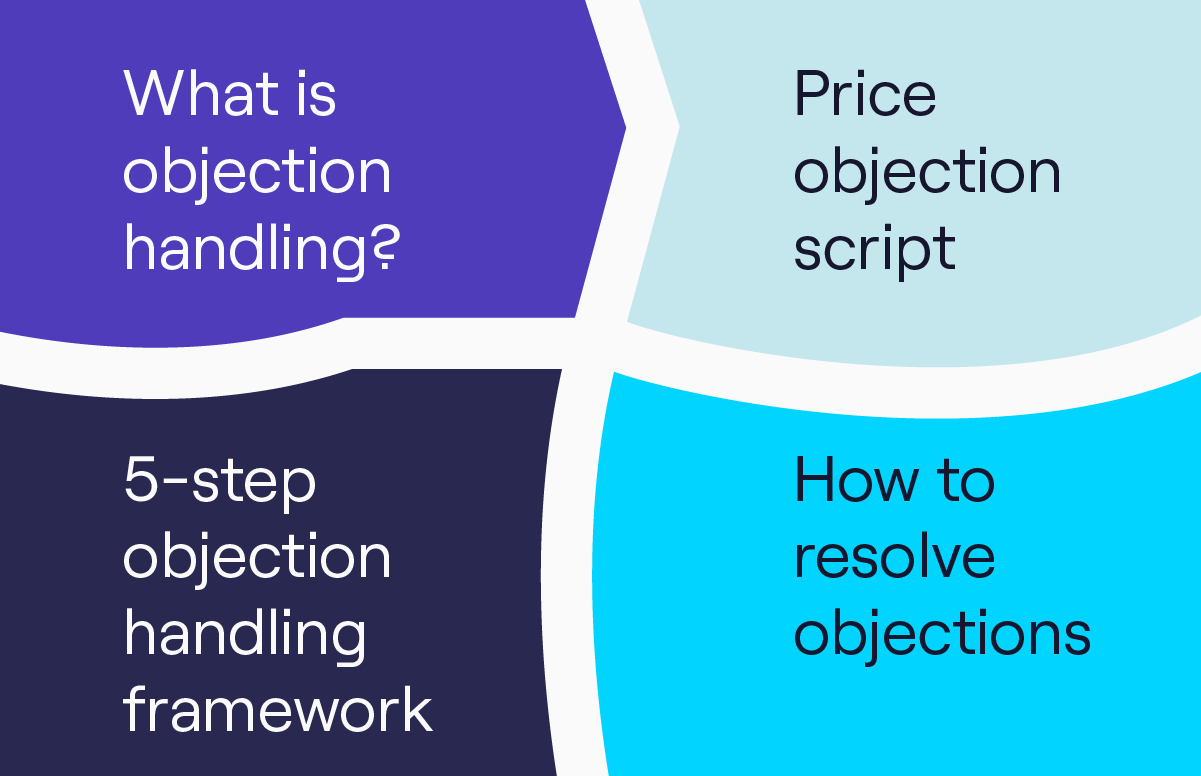13 Common Data Quality Issues And How To Solve Them
10 data quality issues:
Low-quality data is a serious problem for sales and marketing teams.
It can be a hidden cause behind many bad business outcomes, such as low pipeline velocity or conversion rates.
Poor data quality can lead to inaccurate reporting, misguided decisions, and, at worst, lost revenue.
In this article, we’ll explore the ten most common data quality issues. We’ll also explain how to solve each one.
Scroll 👇 or use the menu to skip to a problem that’s plaguing your team the most.
1. Inaccurate data
This issue comes to mind for most business users when they have data quality concerns:
Inaccuracy.
In other words, data that has errors in it or is just plain wrong. It can be as simple as a mistyped phone number or as large as a set of stakeholders synced to the wrong account due to a data importation issue.
There are many causes of inaccurate data. Human error in manual data entry (from both internal team members and customers filling out forms incorrectly) and poor data integration are two of the most common.
Inaccurate data leads to misdirected business decisions and a lot of wasted time.
Here are some examples:
- Incorrect phone numbers lead to poor call answer rates and reps wasting time chasing down the right contact details.
- Incorrect email addresses hurt open rates, don’t elicit responses, and can impact your sender reputation.
- Incorrect customer records (Chris vs. Kris, for instance) can harm trust and hamper your ability to build rapport.
In short, inaccurate data is a major issue for business growth!
Solutions here include:
- Minimising the amount of manual data entry to avoid human mistakes, replacing it with integrations and automation.
- Auditing data integrations to ensure accuracy.
- Running regular validation and accuracy checks.
Cognism can help with that last point. Our Diamond Data® is the most premium B2B data asset on the market.
To become a Diamond, a contact undergoes an additional layer of verification, during which our team calls the contact and confirms the mobile number’s accuracy.
This means that when your reps call, they’ll connect with up to 87% of their list.
2. Incomplete data
The next common data quality problem is incomplete data.
This is when data is missing critical fields, like an account that doesn’t have all the stakeholders or a person in your CRM for whom you have an email address but not a phone number.
Why is this such a common issue?
Usually, the person responsible for entering the data simply doesn’t have it all to hand (or perhaps doesn’t have the tools available to form a complete data set). You’ll also see incomplete data come through when customer-facing forms have non-compulsory fields; some will just neglect to fill them in.
It’s pretty easy to see how this can cause issues for sales and marketing. You can’t very well call a prospect if you don’t have their phone number in your sales prospecting tool.
However, even issues such as an incomplete picture of the buying committee at an account can hold you back, preventing you from reaching the people who control the decision-making process in a deal.
The solution here is simply to identify the gaps and fill them.
Cognism’s data enrichment features can help fill in the gaps in your data set. Just plug in your CRM, and we’ll identify incomplete data fields and enrich them with accurate, verified sales data.
We’ll cleanse your existing list, enrich it with company and contact data, and help you update data in real-time as new prospects enter your CRM.
From there, you can put practices in place to prevent incomplete data from existing going forward, such as making form fields compulsory or keeping a data enrichment tool active.
Take an interactive tour of Cognism Enrich 👇
3. Duplicate data
Duplicate data occurs when you have multiple records of the same entity (e.g., a company or a contact) in a single database.
This usually happens because data is imported from various sources without a deduplication process or an existing data check taking place.
Duplicate entries can lead to redundant outreach efforts, such as two reps going after the same account. Not only is this a massive waste of time, but it also leads to reporting issues.
At worst, it can lead to lost deals from customers frustrated by several reps getting on their case.
Cognism can help sales leaders deduplicate their existing database by automatically identifying and merging duplicate records.
You can run through this process once as part of the enrichment process and then set up duplicate handling rules for new leads entering your CRM.
4. Outdated data
Outdated data is technically a subset of inaccurate data since it, too, is sales data that’s simply incorrect.
The cause, however, is different.
Outdated data is information that’s no longer relevant or current, such as an email that was correct but is no longer valid (because the prospect left the company and the account was shut down, for example).
It’s natural for data to become outdated over time. Job titles change, people leave organisations, companies get acquired, and contact details such as phone numbers can even be replaced.
About 30% of your customer information goes stale every year. Updating it is just part of a regular data hygiene practice.
As natural as it may be, outdated data has the same negative impact as other common quality issues: wasted time and effort from your sales reps.
Solving the outdated data problem requires regular updates. A manual audit of your data verification practice (yearly, say) works, but the preferred method is a solution like Cognism, which offers regular updates and alerts.
When setting up data enrichment in Cognism, you can schedule CRM enrichment updates at pre-defined intervals. This ensures the information in your database is timely and correct.
5. Inconsistent data
Inconsistent data is when discrepancies or differences exist between how data is stored or inputted.
It occurs when different teams or systems use varied data entry standards or formats, such as different company branches having different processes for entering invoice information.
An example would be having inconsistent data formats, such as reporting a closed-won deal on the 4th of June when it should have been the 6th of April. You can see how this can lead to serious ramifications for businesses!
It also creates issues for data integration and analysing sales strategies at a company level.
Standardising data entry processes across the organisation is the solution here.
Cognism can help by standardising data formats, integrating across various systems, and employing data harmonisation processes to prevent inconsistent formats in your data.
6. Unstructured data
Unstructured data is a typical data quality problem. It occurs whenever customer or company data lacks organisation or a predefined format.
Information from free-text fields on customer-facing forms, emails, or social media are all examples of data that’s unstructured.
Examples of structured data, on the other hand, include customer names and phone numbers or company headcount and revenue. These pieces of information are found in pre-defined fields. You can filter, sort, and search them.
Unstructured data doesn’t necessarily decrease sales data quality.
But it is difficult to analyse and extract actionable insights from. Traditionally, you just have to find and read it, which is time-consuming.
Today’s AI tools can help with that. You can throw them large unstructured data sets and ask them plain questions.
Take Cognism’s AI Search.
Type in a simple prompt (in any language!), like “Show me businesses in IT with less than $50M annual revenue”, and AI Search will do all the heaving lifting, presenting you with a list of relevant leads.
/Cognism%20Product%20-%20Compressed/AI%20Search-2-webp.webp?width=500&height=500&name=AI%20Search-2-webp.webp)
7. Dark data
Dark data, which also goes under the name hidden data, is any data you’ve collected but isn’t visible, used, or analysed.
Its data stored in systems but isn’t actively accessed or leveraged, such as data from sales that never gets shared with customer success and therefore can’t be used to deliver better, more personalised services.
Why is dark data a problem for B2B companies?
Because it represents a missed opportunity to gather valuable insights.
You’ve got the data, but you’re not doing anything with it, so you’re missing out on whatever insights that data may be able to provide, such as understanding trends among your closed-lost deals.
To eliminate dark data, use tools that can find hidden correlations or implement a data catalogue.
8. Orphaned data
Orphaned data is the next common quality issue for business data. It’s data that’s isolated and not linked to any relevant records or context (though it may previously have been).
It can also be data that existed in one contact database but not another, often owing to poor quality integrations or compatibility issues across platforms (such as a given field existing in one tool but not in another).
It often occurs because records get partially deleted. For example, you might cleanse your database of customer data (since you only want to keep personal information for as long as necessary), which may leave some order data stranded.
Orphaned data is problematic as it can lead to incomplete views of prospects or clients, affecting your ability to make informed decisions or to personalise outreach.
Resolving the orphaned data issue requires:
- A data audit.
- The implementation of database constraints.
- The use of automated scripts to identify and handle orphaned data.
9. Irrelevant data
Irrelevant data is any piece of data that doesn’t pertain to your current business strategies or is just excessive in volume.
There’s a natural and valid cause for this:
Many businesses (or rather the people who work for them) assume that acquiring and retaining every piece of customer data possible, for every customer, will help them at some point in the future.
It’s a valid notion in some ways, but it ultimately leads to having too much data to know what to do with, especially if it’s not helpful for your business activities. Also, data ages (see issue 4. Outdated data!) losing value and becoming obsolete.
This creates a lot of problems:
- Team leaders and managers will struggle to make informed business decisions.
- Reps will find it harder to get the information they need when they need it.
- Your sales processes will slow down considerably.
What’s the solution here?
Set a policy of deleting redundant, obsolete, and irrelevant data. Use data filtering and segmentation tools to trim data sets down to size.
10. Fraudulent data
Finally, we have fraudulent data, which is a crucial issue for any company!
It refers to any piece of data that’s intentionally falsified or misleading.
It happens when malicious companies or individuals purposefully add fraudulent or false information to your database to deceive or manipulate you. A competitor who adds fake leads to your CRM via prospect-facing forms is an example.
You’ll need robust data verification and fraud detection mechanisms to overcome this.
It’s also wise to partner only with reputable data suppliers who take fraud seriously. At Cognism, we employ robust data verification mechanisms to filter out fraudulent data:
- We’re fully GDPR and CCPA-compliant.
- Our database is fully notified.
- We’re the only provider that checks Do-Not-Call lists in the US, Canada, Australia, the UK and European countries.
11. Decaying data
Data decay is the gradual deterioration of data quality over time.
For example, you might have imported company and contact data from a trusted and validated lead list, but that was three years ago.
By now, some of your key decision-makers have left or changed roles, email addresses have changed, and, in some cases, the company itself has rebranded or pivoted.
To solve decaying data, you’ll need to find a reliable CRM enrichment solution. Cognism and other DaaS providers can solve this issue for you.
Cognism’s DaaS, for example, offers flexible delivery options to integrate B2B data in the format and frequency of your choice:
- API & Flat File delivery: Real-time enrichment or scheduled batch drops via Snowflake, S3, Google Cloud, Databricks or SFTP
- Data quality & compliance: Audit-ready metadata and consent trail are aligned with GDPR, CCPA, and PECR.
- Continuous value realisation: ROI benchmarking, usage health reviews and expansion scoping.

12. Non-compliant data
Non-compliant data (such as data that doesn’t comply with GDPR) is a massive issue for sales and marketing teams.
This typically occurs when companies buy lead lists from unestablished or unreliable suppliers.
Non-compliance can result in huge fines and damage to your company’s reputation. Stick to industry-known and trusted suppliers and always confirm GDPR compliance before importing lead data.
13. Badly integrated data
Finally, we have integration issues.
When the integration between your CRM and data source fails or hasn’t been set up correctly, it can result in dropped data points (leading to incomplete data) or a failure to perform duplicate checks before importing data.
Solutions like Cognism are integrated with renowned platforms such as Salesforce, HubSpot, Pipedrive and many more. This makes it easy to centralise your data across everyday systems and keep your CRM up-to-date.
Why should you care about bad B2B data?
Does poor quality data really matter all that much?
Is it something you should be investing time and resources into remedying?
The short answer is yes.
To help you understand why, let’s explore the impact of poor data quality on sales and marketing teams:
It wastes time
Your reps rely most on your CRM sales data in B2B sales and throughout your organisation.
Some stats:
- Experian found that 94% of businesses suspect that the data they have on their customers is inaccurate.
- According to ZoomInfo, chasing bad data wastes over 27.3% of a B2B salesperson’s time.
Bad sales data leads to wasted time correcting errors, searching for accurate or up-to-date information, and making calls or sending emails that don’t reach the person you’re trying to contact.
It generates bad leads
Bad data is unusable for SDRs. They can’t call prospects if the phone numbers aren’t correct!
The wrong data in a contact field prevents reps from following up with leads. It also prevents searches from being populated with quality leads.
Businesses with poor data quality also waste their lead generation and marketing efforts because they have an inaccurate picture of target customers.
It leads to missed opportunities
If you make decisions based on inaccurate and outdated data, you’ll probably make the wrong calls. Bad data quality can lead to improper analysis of sales pipelines, resulting in inaccurate forecasts.
Poor data quality impacts your decisions and removes key engagement points from your sales funnel. This means that your salespeople won’t be able to communicate effectively with leads.
When that happens, your reps can’t nurture and convert new business. You’ll see reduced demand for your products/services and lost revenue.
👋 Pssst - If you have bad B2B data, you probably have a broken sales funnel, too. Check out this hub on how to fix your funnel.
It results in undelivered mail
It isn’t just the phone that’s important!
Your sales team relies heavily on email addresses to engage with leads, start the sales cycle, and close deals.
All their efforts go to waste if they don’t deliver their emails to the right inboxes.
When businesses have incorrect or outdated email addresses in their database, this can result in undelivered emails, ultimately affecting the success of email marketing campaigns.
Undelivered emails waste resources and time and damage a company’s reputation with internet service providers (ISPs). ISPs closely monitor the engagement rates of emails sent from a domain, and if they see a high rate of undelivered emails, they may flag the domain as spam.
This can lead to future emails from your domain being automatically sent to recipients’ spam folders, resulting in missed opportunities for communication with potential customers.
Say goodbye to high bounce rates! Cognism’s email data has helped users retain a consistent email deliverability rate of 95% 👇

Head of Marketing @Plandek

It creates a compliance risk
Many industries have specific regulations related to data management and accuracy. In B2B, you risk fines from the ICO if you don’t avoid bad data.
If your B2B data is incorrect, incomplete, or inconsistent, it can lead to serious compliance issues.
For example, if you use B2B data for marketing purposes. You may inadvertently violate consumer protection laws if the recipients have yet to be notified or haven’t opted-in for marketing from your company.
It ruins your brand reputation
Getting a customer’s name wrong on a cold call or sending an email to the wrong recipient is never a good look, but both can easily happen if your data is inaccurate.
Customers who receive inaccurate or outdated information from a company can experience frustration and disappointment, ultimately resulting in a loss of trust in the brand.
For example, customers may view the company as careless or unprofessional if they receive promotional emails with incorrect personalisation details or outdated offers. This can damage the company’s reputation and make it more difficult to retain or attract new customers.
What is the cost of bad data in sales and marketing?
So, what is the cost of poor data quality?
For starters, it’s a recipe for financial losses and organisational chaos!
But financial ruin isn’t the only cost; its implications run even deeper than you can ever imagine.
Let’s look at the main consequences of poor data quality:
Loss of clients through data inaccuracies
Losing clients is never a good thing.
Your goal as a sales leader is to ensure your team attracts new clients, creates customer loyalty, and retains existing customers for upsells.
Clients quickly get annoyed when you throw bad sales data into the mix.
Why?
If your CRM contains inaccurate data and you’re calling or emailing clients with the wrong name or contact details, they will quickly get annoyed. Your company will come across as unprofessional and annoying, leading to fewer clients wanting to sign on with you.
What’s more, imagine you get an existing client’s data wrong, and you call them to sell your product or service, and they already use it.
Not only is that embarrassing, but the client won’t feel valued.
Financial loss through wasted time and money
The truth is that the impact of poor data quality on business is ultimately the loss of revenue.
How?
Poor B2B data quality leads to bad decision-making and misguided sales and marketing strategies that waste time and money. The results will never be accurate or beneficial because you’ll always target the wrong leads.
Not only will you end up with a bad brand reputation, but the potential client loss due to that reputational damage will also be significant.
Furthermore, a fine for non-compliance is substantial, and rectifying data issues may cost a considerable amount.
Domain blacklisted means fewer prospects reaches
If you send emails to incorrect or out-of-date email addresses, your email bounce rates will increase, leading to a bad domain reputation that’s hard to fix.
This could ultimately lead to your domain being blacklisted by certain email service providers, meaning you can reach fewer prospects with your outbound communications.
Fines from the ICO
The Information Commissioner’s Office (ICO) is a regulatory body in the UK that enforces data protection laws and regulations.
One of the main areas that the ICO focuses on is ensuring that organisations maintain high data quality standards to protect individuals’ privacy and prevent data breaches.
When organisations fail to adhere to these standards and are found to have poor data quality, they can face fines from the ICO.
These fines can be significant, potentially costing your organisation thousands or even millions.
Lower efficiency through time wasted on the wrong prospects
If a company’s B2B database or CRM isn’t accurate, employees spend valuable time correcting errors or searching for the information they need.
This can lead to delays in decision-making processes, time spent selling, delays in launching email marketing campaigns, and a waste of resources.
For example, imagine a sales team working with outdated customer contact information. They may spend hours trying to reach potential leads, only to discover that the information is no longer valid. This wasted time and effort could have been avoided if the data had been accurate and up-to-date.
Want to discover the cost of bad data to your company?
Solving data quality issues for good
Poor quality data can be a real deal killer.
It prevents sales leaders from forming effective, relevant strategies, negatively impacts your ability to report accurately on performance and ultimately leads to lost revenue.
Many of the common data quality problems outlined above can be resolved with a professional, reputable data provider like Cognism.
We can cleanse and enrich your existing database, help you build targeted lists with AI Search, and ensure accurate, up-to-date contact data with phone-verified mobile numbers.


